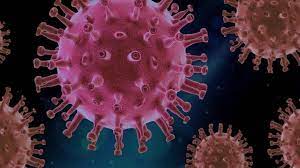by Mac Slavo, SHTF Plan:

Scientists are scrounging up some fear as they declare the next plandemic could be the “big one” and the deadliest disease known to humanity. It could be just “simmering in the background,” waiting to be unleashed, according to some scientists.
The paramyxovirus family has over 75 viruses, including mumps, measles, and respiratory tract infections, and was added to the list of the National Institute of Allergy and Infectious Diseases’ pandemic pathogens to watch in October. One of the viruses, the Nipah virus, can infect cells with receptors that regulate what gets in or out of cells that line the central nervous system and vital organs, according to the Daily Mail UK.
TRUTH LIVES on at https://sgtreport.tv/
This Nipah virus has a fatality rate of up to 75 percent compared to COVID-19, which is well under one percent and honestly, for all statistical purposes is zero. Scientists claim that unlike the flu and COVID-19, some of the paramyxoviruses are “speedy shape-shifters,” that do not appear to mutate as they spread. However, they have become “very good at transmission among humans.”

“Just imagine if a paramyxovirus emerged that was as contagious as measles and as deadly as Nipah,” Michael Norris, Ph.D., assistant professor at the University of Toronto, said in a statement.
The scientists claim that because most people infected with one of the more than 75 paramyxoviruses do not survive, it makes it nearly impossible to develop treatments and vaccines.
A Virus That Has A Death Rate Of 40 To 75 Percent Is Infecting And Killing People In India
Paul Duprex, a virologist at the University of Pittsburgh, told The Atlantic that rubulaviruses, one of the paramyxovirus subfamily that includes mumps, are of concern.
Humans, apes, pigs, and dogs are natural hosts and are easily infected in close quarters. -Daily Mail UK
A report published in 2022, that addressed paramyxoviruses reads:
“As the world continues to better understand these connections between human, animal, plant, and environmental health, viruses are moving from animals to humans at ‘alarming rates. In addition to known viruses, on average, two novel viruses appear in humans each year, and the proportion that gives rise to larger outbreaks is growing. Many of these viruses have pandemic potential – the potential to spread across multiple continents.”




